
 Campus Newsletter
/ Cover Story
Campus Newsletter
/ Cover Story 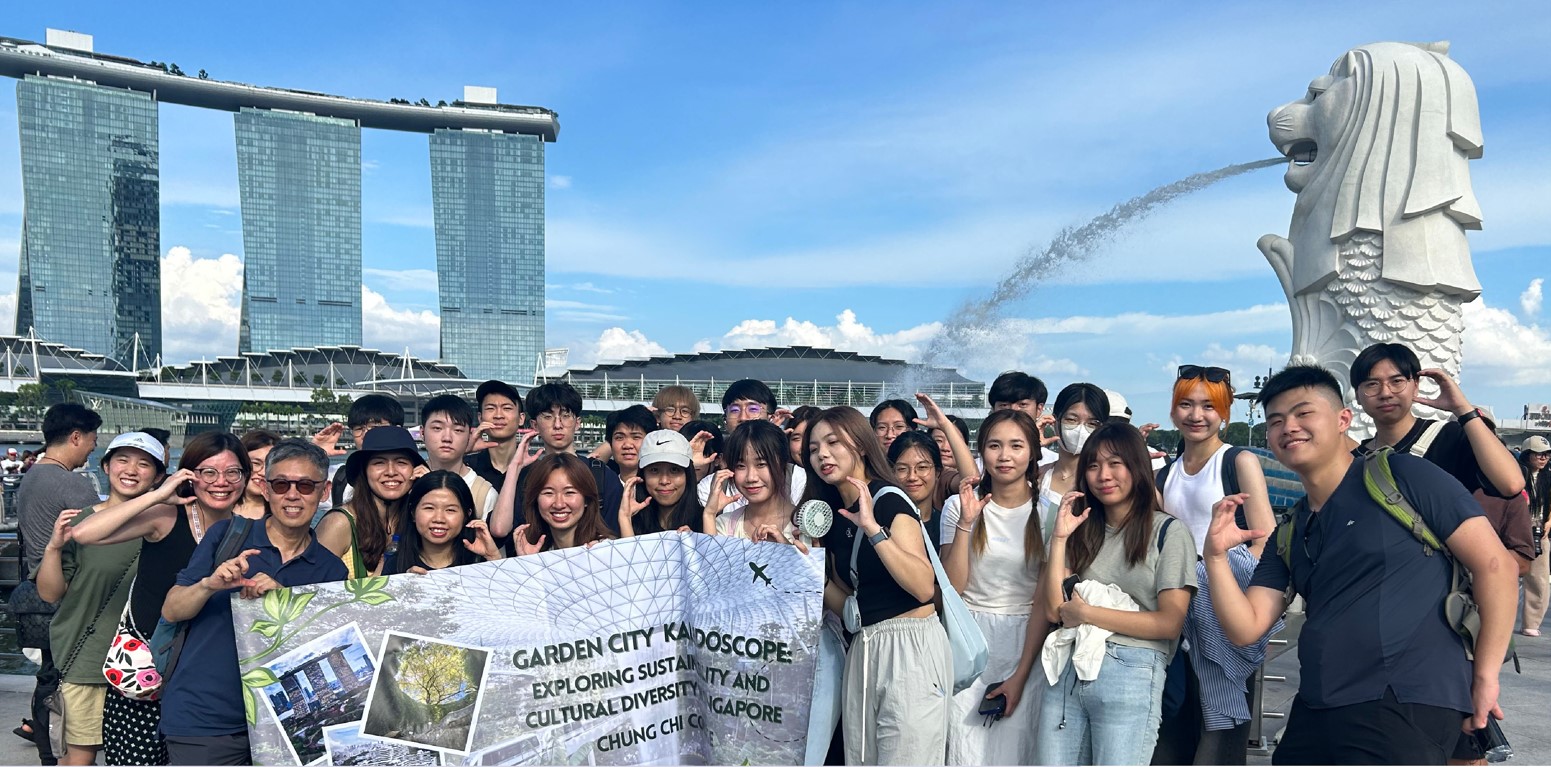
All seasons are spring, the air is warm but not thick. Instead of mountains, greenery surrounds city skyscrapers — this is Singapore, the “Garden City”. With support from Chung Chi College, we came to this island 2,500km away from home for a 5-night, 6-day journey. Our objective was to explore the “Garden City” urban landscape and investigate how they achieve sustainability goals. We were given the chance to have academic discussions with students of Nanyang Technological University, and visit public housing facilities, Singapore City Gallery, and desalination plants, diving headfirst into this multicultural society.
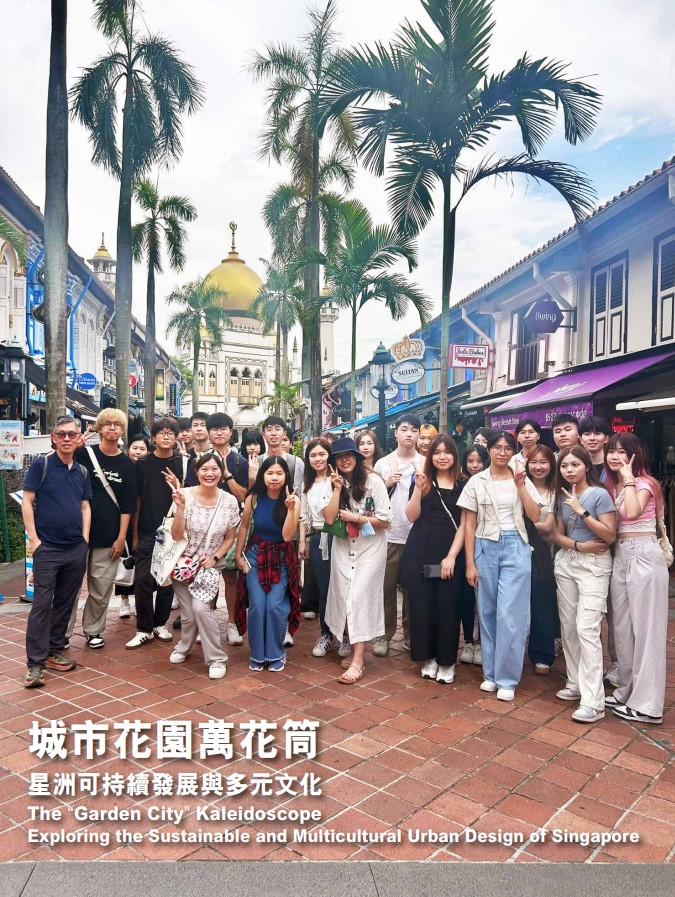
Merlion of The Lion City
“The Lion City” was born in the 14th century. It all started with Prince Utama’s lion encounter during one of his games, believing it was a good omen, he decided to build a city right there, and named it Singapura, meaning “The Lion City”. The name was taken from Sanskrit, combining simha (lion) and pura (city). In 1964, the Singapore government announced the Merlion as the national mascot, one that combines the history and visions of the country. The tail is a reminder of how Singapore started out as a fishing village; the head represents the name of the country, and the vision of being economically influential. “The Merlion is our deity of fortune! It should never be shaded by any buildings, and the water that comes out of its mouth is to be received with cupped hands.” our guide Carol jokingly told us. This stirred up a frenzy among us, and we began taking pictures of the moment when each of us received the water of prosperity! Afterwards, we surveyed Clarke Quay along the Singapore River, where what used to be a container terminal was full of life, a collection of riverside bars, restaurants and antique shops. The ETFE roofs seen everywhere on the streets of Clarke Quay also caught our attention. During the day, they reduce carbon footprint by shielding the sun and rain while regulating indoor temperatures. At night, they transform into a vibrant lightshow that brings the night to life!
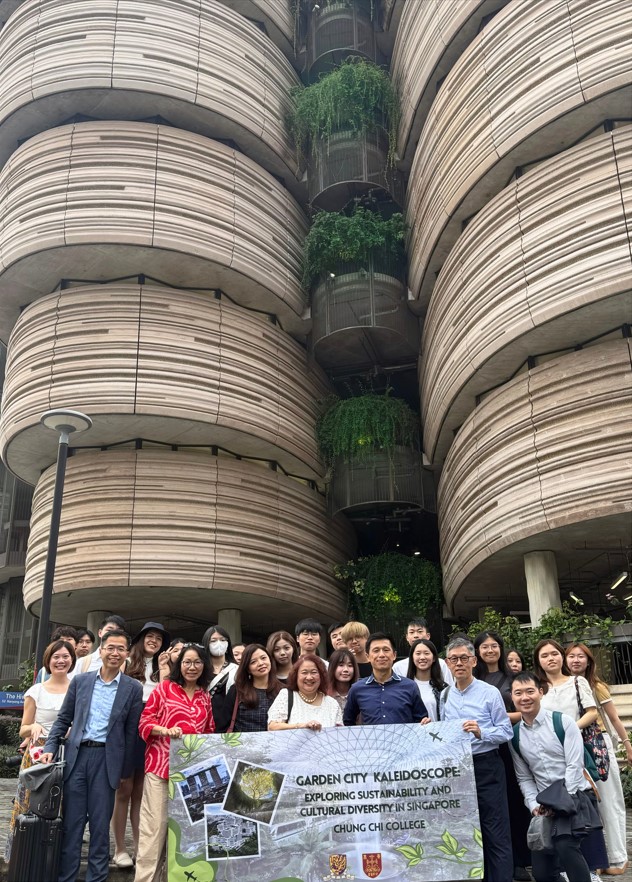
The study group visited The Hive, the learning hub of Nanyang Technological University, and learnt how its architectural design contributed to the natural air conditioning and energy saving.
Sustainable Development and its Multifaceted Quality
Our main event happened on the second day of our journey, as we were honoured to participate in an exchange at Nanyang Technological University. Professor Kwan Mei Po, College Head, shared with us her research on sustainable resources and health related research on carbon emissions, as well as some of her academic speeches at the United Nations which mentioned the prevalence of extreme weather in Hong Kong. Professors from Nanyang Technological University also shared how their school was working with the Singaporean government on multifaceted sustainability projects, and they expect sustainability developments to be complete in 2030. We learnt a lot in this academic exchange, and an important lesson is that sustainability is more than being environmentally friendly or reducing carbon emissions; it should involve in-depth discussion of the allocation and renewability of human and environmental resources, which should consider the relationship between economic development and the environment, and also the connections between population and the urban environment.
An amazing part of this was that our former Vice-Chancellor, Professor Joseph Sung, took the time to join this event, and even invited us to visit him at his residence. Ever since he retired from The Chinese University of Hong Kong, he has been the Dean of the School of Medicine at Nanyang Technological University. Even after so many years Professor Sung still cared so much for the students of CUHK, and his warm words of advice gave us new insights into life, leaving us in awe.
Nanyang Technological University was founded as a university for the people, with the purpose of allowing ethnically Chinese people to take root in Singapore and carry on with them traditional Chinese culture. The Yunnan Garden was created for the homesick Chinese diaspora, referencing traditional Chinese gardens, demonstrating the inclusivity of Singapore. We of course could not miss out on The Hive, or Student Learning Hub South, which was a beehive structured piece of architecture with a dim sum steamer-esque exterior, and a simple air natural convection interior. This means The Hive is not only warm in winter and cool in summer, but also protects from the wind and rain. I especially like the round table setup in classrooms, with discussion space for each group, screens for sharing reports and intuitive voting buttons. This enables more interaction in class between students and teachers, as everyone can see what goes on clearly, and it is made easy for students to express themselves, while considering different learning needs.
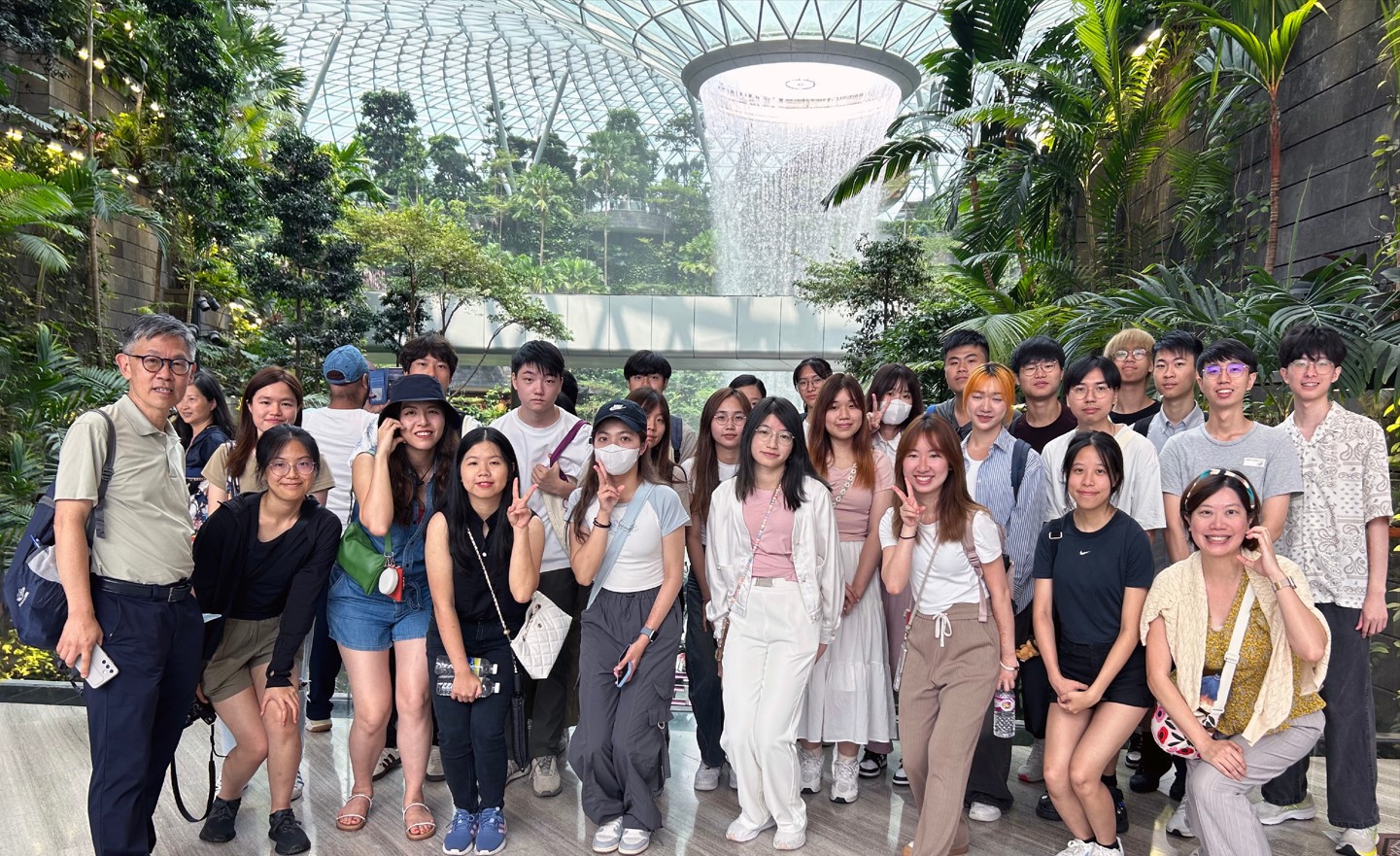
The ETFE (fluoroplastic membrane) canopy is also installed in the Jewel Changi Airport, an entertainment and retail complex in Changi Airport. It provides protection from the environment to passengers, while allowing them to see the sky.
Multicultural Public Housing Communities
In the next few days, we visited different public housing estates. These high-rise public housing buildings commonly feature sky gardens and are otherwise like those in Hong Kong. My personal favourite part is the community club and hawker centre on the first floor. It is an exhibit of mutual respect among different ethnicities and religions, that fosters a sense of belonging to the community.
The ground floor of these public housing properties are generally completely accessible to the public. Here, the colonnade and loadbearing walls separate the space into multiple areas, allowing for better air ventilation and reduced humidity. It is also a place for community gatherings, including different ceremonies for life events. Something that you see in Singapore is the coexistence of diversified religious and cultural ceremonies; wedding and funeral ceremonies would certainly be different when Malay, Indian, and Chinese people live together with different religious beliefs. The city planning of this country shows careful consideration for integrating residents from anywhere, as do their hawker centres, where the layout of halal and non-halal foods allows people of different religions to have meals together without any curious stares. These elements should be applied in Hong Kong — rather than labelling immigrants with their ethnicity, we should treat them as Hong Kong citizens with different religious beliefs for better inclusivity.
The preservation of multiculturalism has put Singapore’s sustainable development in the lead, cultivating a sense of belonging for many in the city. Like the air we breathe, multiculturalism is necessary for a brighter future.
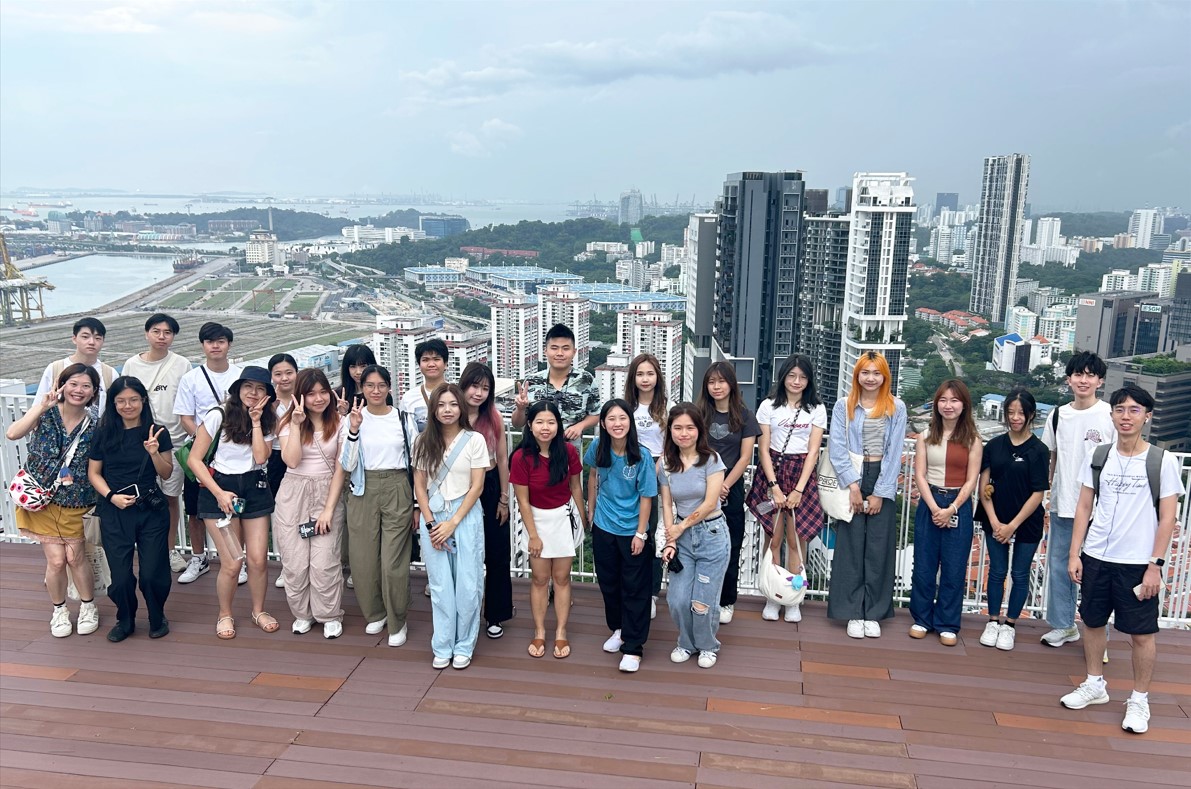
The group also visited the public housing facilities planned by the Singapore government. In the image is the public housing complex Pinnacle@Duxton which is a fifty-storey building.
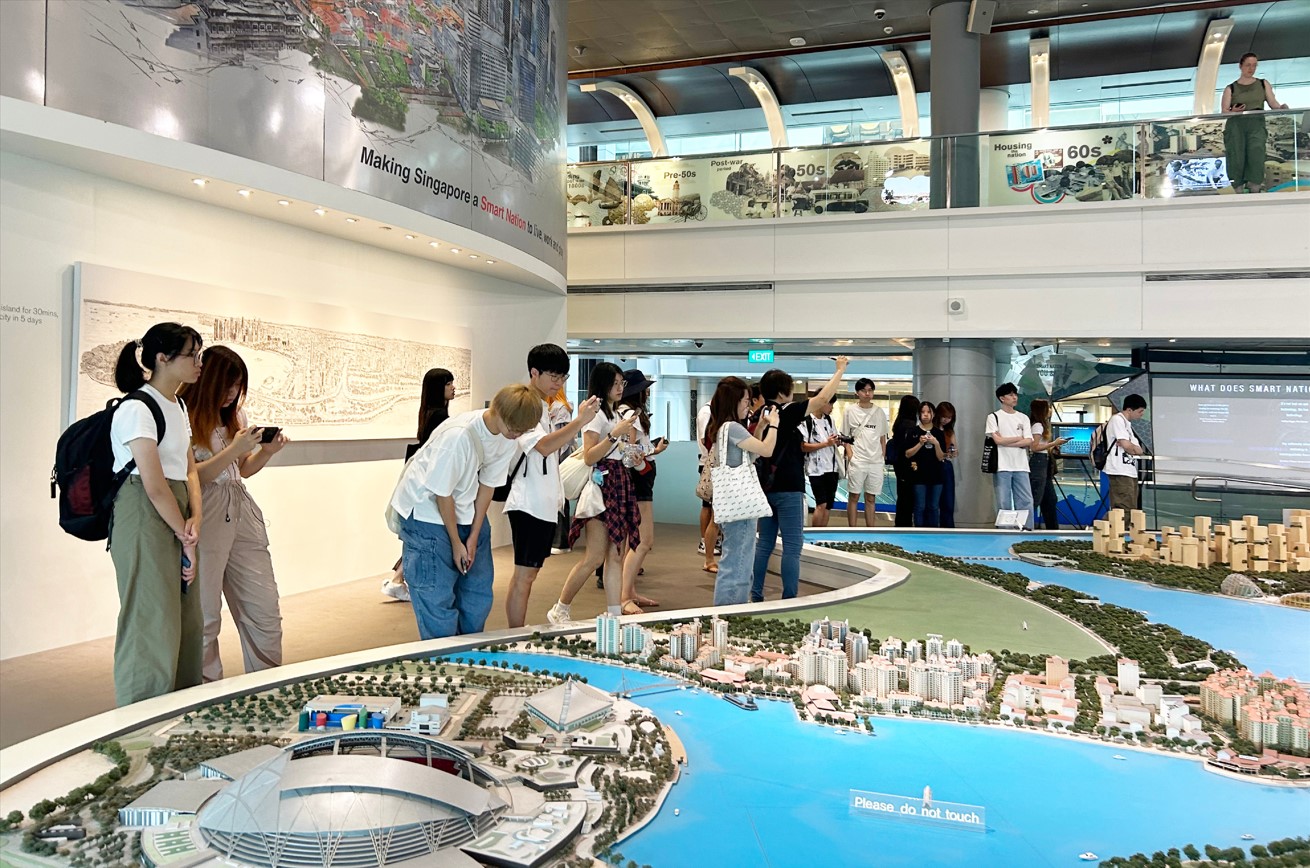
The group learnt about the local urban planning in the Singapore City Gallery.
Student Reporter Lee Ching Er
English Translation Lee Yin Lok